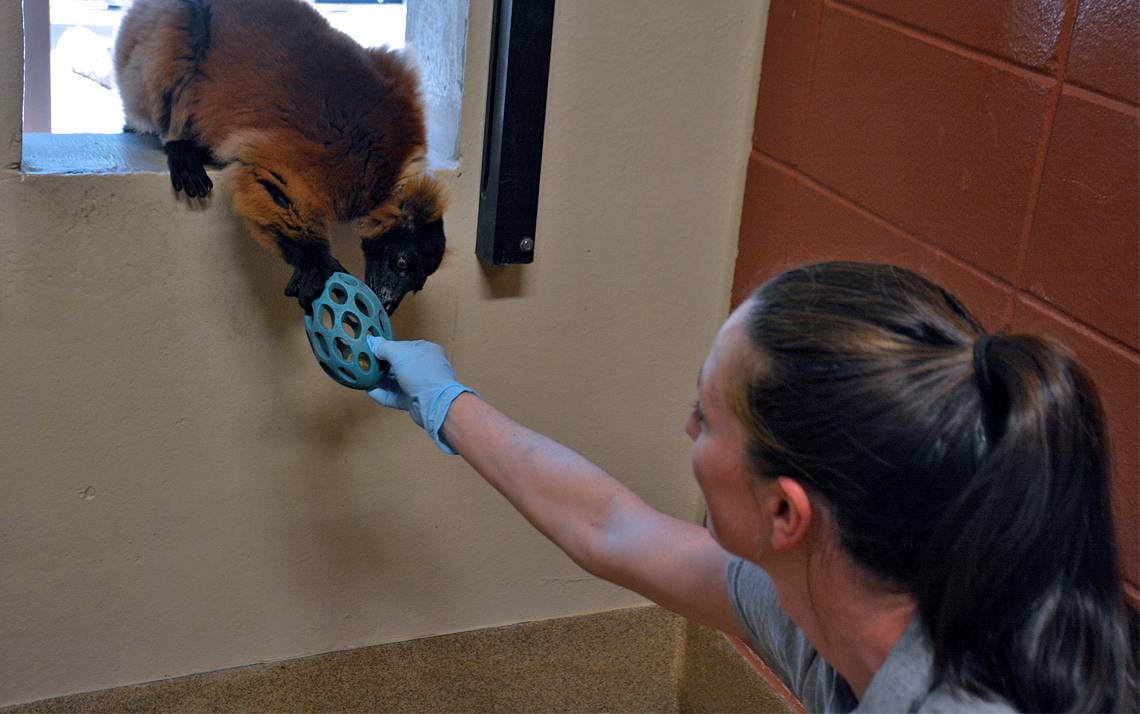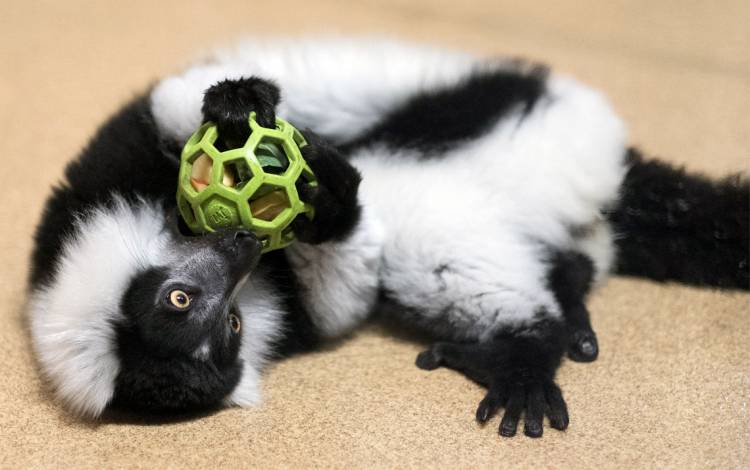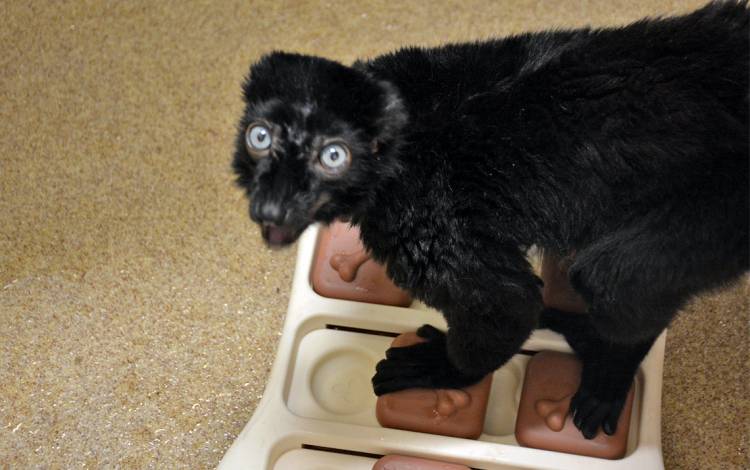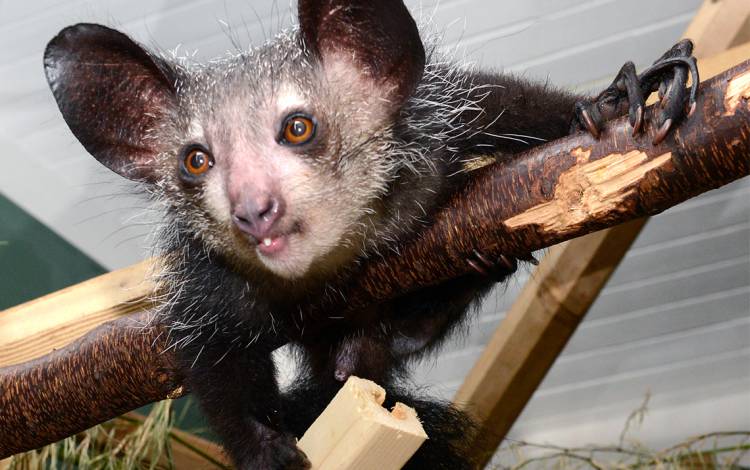Duke In Pics: Playtime at the Lemur Center
Lemurs enjoy solving puzzles and climbing bamboo

Kate Byrnes stood with her hands out as she tried to entice Minias, a red-ruffed lemur, toward her with a rubber ball.
The lemur inched closer and sniffed the ball, which had a piece of dried apricot tucked inside.
“He can be a little shy at first as he tries to figure out what I have,” said Byrnes, a primate technician for the Duke Lemur Center, as the lemur grabbed the ball from her hands. “But eventually he will realize a treat is hidden inside the Kong.”
Enrichment is an essential part of the animals’ lives at the Duke Lemur Center. Every day, primate technicians keep lemurs’ brains and bodies active with enrichment opportunities to promote curiosity, exploration and mental stimulation.
Lemur Center staff provide activities such as puzzles to solve for treats and climbing exercises with stalks of large bamboo or sturdy branches.
“We try to provide environments that encourage species-specific natural behaviors,” said Meg Dye, curator of behavioral management for the Duke Lemur Center. “When researchers come to collect observational data at the DLC, they want to study lemurs that exhibit natural behavior.”
Here’s a look at how the Duke Lemur Center enriches the lives of lemurs.
 Helene, a 10-month old black and white ruffed lemur, plays with a green ball filled with apples and leafy greens. Helene uses her nimble fingers to pull the treats out of the ball.
Helene, a 10-month old black and white ruffed lemur, plays with a green ball filled with apples and leafy greens. Helene uses her nimble fingers to pull the treats out of the ball.
The toys encourage lemurs to solve problems.
“When lemurs aren’t stimulated mentally or physically they may display stereotypic behaviors such as overgrooming or pacing,” Byrnes said. “We want them to be happy and fulfilled.”

Hiddleston, a blue-eyed black lemur, solves a puzzle that contains dried mango. The lemurs slide the plastic nobs to the left and right to reveal hidden compartments containing fruit.
This lemur took its time checking over nine compartments to ensure she left no snack behind.
“Every single animal is different,” Byrnes said. “Some take their time. Some rush through. Some let other animals do all the work.”

Grendel, an aye-aye lemur, works on her personalized “worm feeder.” The wooden box is full of tasty mealworms the aye-aye relishes.
Technicians monitor responses to each item closely. If the enrichment activity is not eliciting excitement or a desired response from the lemur, staff members find a new item for the animal to play with.

Gellar, a blue-eyed black lemur, climbs aboard an old bicycle tire to snack on mango.
The tire, hanging from the ceiling, shifts in different directions as lemurs climb. The idea is to mimic unstable branches.
This lemur had no problem handling the topsy-turvy tire as she latched on to eat the fruit.
“We want them to use different muscles to maintain their balance,” said Dye, the curator of behavioral management. “Enrichment is an important aspect of both the physical and mental health of the animals in our care.”

The Duke lemurs regularly receive gifts from the community. In this case, fourth graders from the Burlington School, in Burlington, N.C., sent toy mirrors, cinnamon, hammocks and a bed.
Technicians at the center manage an Amazon Wishlist of gifts for the animals, like milk crates, sugar cane and cashew butter. The Lemur Center also has a guide for making homemade enrichment toys using cardboard rolls.
Have a story idea or news to share? Share it with Working@Duke.